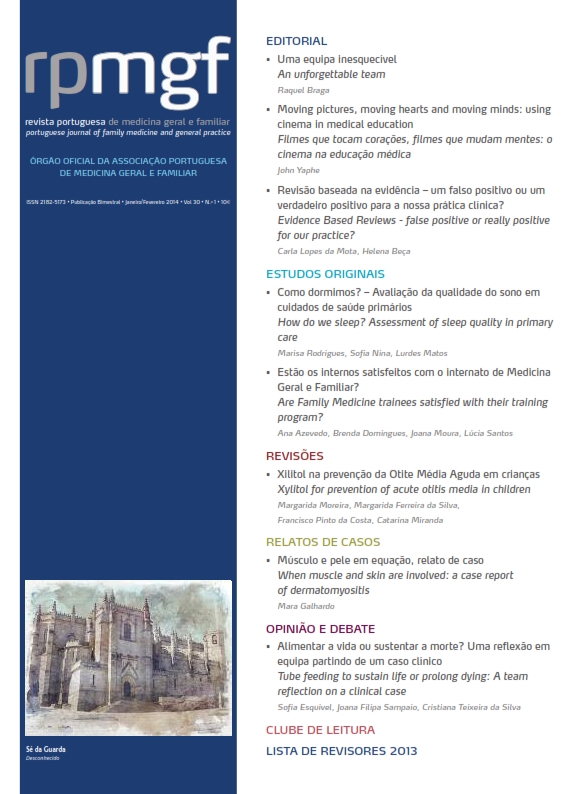When muscle and skin are involved: a case report of dermatomyositis
DOI:
https://doi.org/10.32385/rpmgf.v30i1.11242Keywords:
Endocarditis, Heart Valve Prosthesis, Fever of Unknown OriginAbstract
Introduction: Dermatomyositis is an inflammatory myopathy with characteristic cutaneous manifestations and a prevalence of 1-10 per million adults. Timely recognition has prognostic implications. The general practitioner has an important role to play in both diagnosis and follow-up of the patient. Case report: A 50 year-old woman with a previous history of subclinical hypothyroidism came to her Family Physician complaining of muscle weakness and redness of the face and neck. Dermatomyostitis was suspected and laboratory tests showed significant elevation of creatine kinase and transaminases. She was referred to Internal Medicine for consultation. Additional tests confirmed the initial suspicion. She began treatment with corticosteroids with gradual improvement in her condition. She returned to her Family Physician to obtain a renewal of the certificate of incapacity for work. This was opportunity to explore ways to help the patient cope with the disease. Comment: This is a rare disease with a prevalence of 1-10 cases per million. Early recognition and treatment of dermatomyositis are important in decreasing morbidity from systemic complications. The association of dermatomyositis with other connective tissue diseases and neoplasms gives greater importance to this diagnosis. For the Family Physician, care is not limited only to the physical manifestations. Dealing with all aspects of the disease and helping patients adapt to it are equally important.Downloads
Downloads
Published
Issue
Section
License
The authors will assign to the RPMGF the sole right to publish and distribute the content of the manuscript specified in this declaration via physical, electronic, broadcasting or any other medium that may come into existence. They also grant the RPMGF the right to use and exploit this manuscript, in particular by assigning, selling or licensing its content. This permission is permanent and takes effect from the moment the manuscript is submitted, has the maximum duration allowed by applicable Portuguese or international law and is of worldwide scope. The authors further declare that this assignment is made free of charge. If the RPMGF informs the authors that it is not going to publish their manuscript, the exclusive assignment of rights ceases forthwith.
The authors authorise the RPMGF (or any entity it may appoint) to act on their behalf when it believes that copyright may have been infringed.





